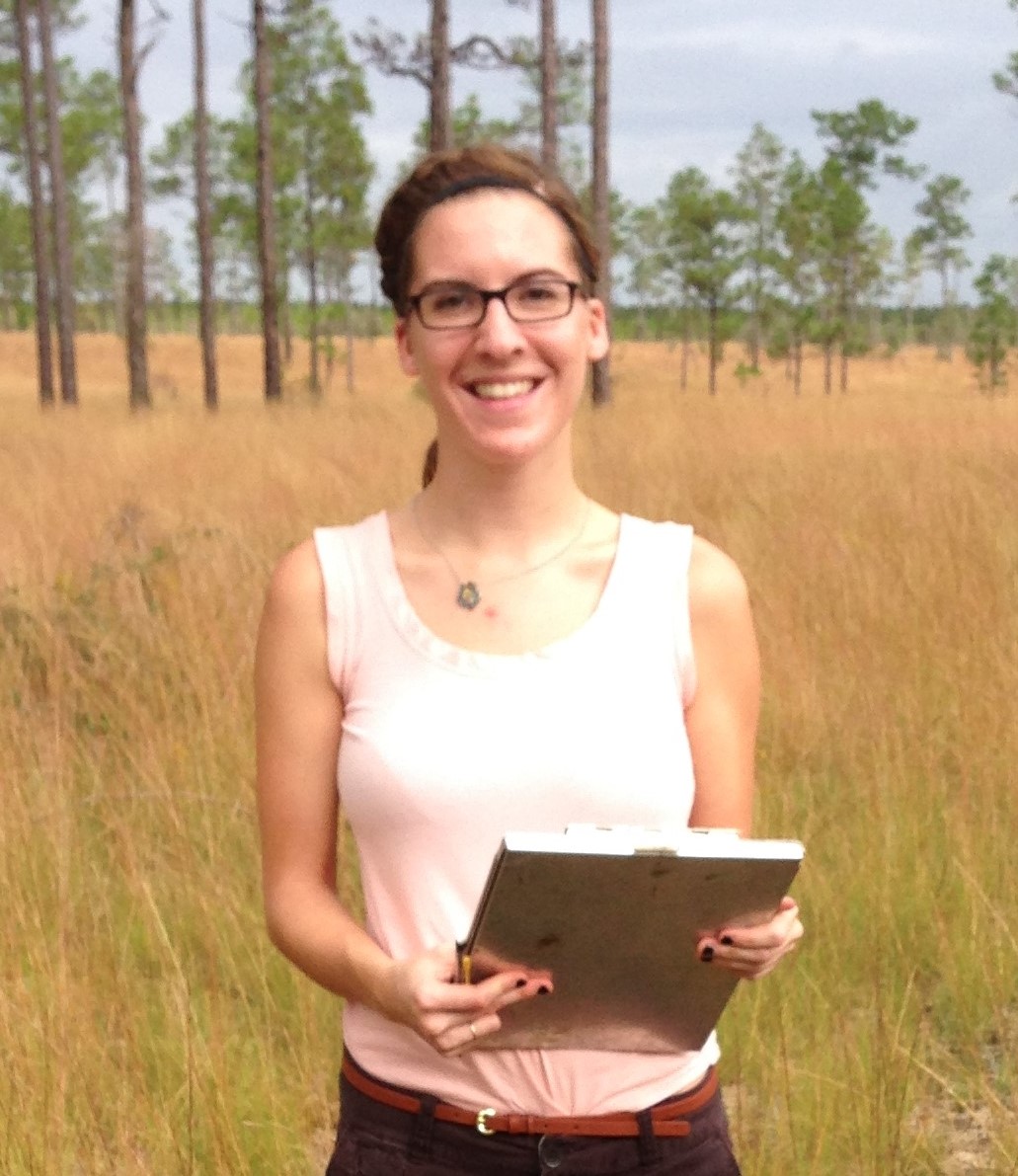Cohort University of Florida |

|
1. Societal and climate change
 © Katie McCurley
© Katie McCurley
|
Humans and water resources – applied socio-hydrological perspectives on modeling water resource distribution and commodity consumption Candidate: Katie McCurley Supervision: James Jawitz (University of Florida) |
In 2012, Sivapalan et al. defined socio-hydrology as the co-evolution of humans and water resources, a new sub-discipline of hydrology that has recently experienced a significant increase in popularity among water resource scientists (McCurley and Jawitz, 2017). This perspective sheds light on the reciprocal feedbacks between society and hydrology, a lens through which we look when analyzing the distribution of water climatically, allocation of water economically, and consumption of water societally. We are endeavoring to model the effects of agricultural land expansion, resulting in deforestation, on the local/regional hydroclimatic cycle, upon which agricultural production depends. We will employ basic approaches to approximate the components of the water budget on a catchment scale (Jaramillo and Destouni, 2014) in tropical basins that are experiencing rapid land use change. The impacts of land cover change on the water budget components, particularly evapotranspiration and precipitation, will then be estimated to investigate the negative feedback loop agricultural area expansion has on the local and regional hydroclimate.
We will lay this foundation in order to address:
- The potential detriment agricultural expansion has on itself by affecting rainfall rates when converting forested areas to pasture/croplands, using methods related to a catchment water balance based on catchment properties as well as Budyko-based approaches based on climatic characteristics.
- The effect of the hydroclimatic shift on crop yields, thereby influencing the economy (of mainly developing, commodity producing nations).
- A possible shift in the world crop trade network, which seeks to maximize comparative advantages, taking into account water resource distribution and producing-power with respect to economic clout (Dalin et al., 2012).
- Landscape hydrology
- Eco-hydrology
- Water resource economics/socio-hydrology
- Network analysis
Dalin, C., Konar, M., Hanasaki, N., Rinaldo, A., and Rodriguez-Iturbe, I. (2012). Evolution of the global
virtual water trade network. Proceedings of the National Academy of Sciences, 109(16), 5989
5994. Chicago
Jaramillo, F. and Destouni, G. (2014). Developing water change spectra and distinguishing change drivers
worldwide. Geophysical Research Letters, 41(23), 8377-8386.
McCurley, K. L. and Jawitz, J. W. (2017). Hyphenated hydrology: Interdisciplinary evolution of water
resource science. Water Resources Research. ‘Accepted Article,’ doi: 10.1002/2016WR019835.
Sivapalan, M., Savenije, H. H., and Blöschl, G. (2012). Socio‐hydrology: A new science of people and
water. Hydrological Processes, 26(8), 1270-1276.
2. Societal and Climate Change
 © Yu Fang
© Yu Fang
|
Globally universal pattern of human settlements in river networks Advisors: Prof. James Jawitz, (University of Florida) |
Hortonian ordering and scaling frameworks have been applied to explain ecological diversity and water quality. Further, Hortonian power-law scaling relationships have also been reported between human population and stream order. However, at least two important questions are raised by a purported link between human population and stream order: 1) Is there universality of such scaling beyond specific landscape characteristics, socioeconomic development history, and sociopolitical governance frameworks of individual study regions? 2) Are power-law scaling relationships between human population and stream network topology sufficient to infer spatial patterns of these relationships within river basins?
Overall, we hypothesize a structured downstream clustering of human settlements along river networks, and we employ several metrics including stream order, area functions, and the spectral power of area functions to assess spatial pattern. Our analysis was conducted at a global scale over a broad range of climatic zones with large variation of vegetation types, topography, and natural resource endowments. Our hypothesis was that there would be commonality in the linkages between river geomorphologic structure and human settlement patterns despite the above diversity of catchments. The spatial distribution of human settlements within river basins has implications for water consumption, water quality, and the health of ecosystems.
References
Bertuzzo E, Maritan A, Gatto M, Rodriguez‐Iturbe I, Rinaldo A. River networks and ecological corridors: Reactive transport on fractals, migration fronts, hydrochory. Water Resour Res 2007, 43(4).
Kummu M, de Moel H, Ward PJ, Varis O. How Close Do We Live to Water? A Global Analysis of Population Distance to Freshwater Bodies. Plos One 2011, 6(6).
Krugman P. Confronting the mystery of urban hierarchy. Journal of the Japanese and International economies 1996, 10(4): 399-418.
Bettencourt LMA, Lobo J, Helbing D, Kuehnert C, West GB. Growth, innovation, scaling, and the pace of life in cities. P Natl Acad Sci USA 2007, 104(17): 7301-7306.
Rodríguez-Iturbe I, Rinaldo A. Fractal river basins: chance and self-organization. Cambridge University Press, 2001.
Miyamoto H, Hashimoto T, Michioku K. Basin-Wide Distribution of Land Use and Human Population: Stream Order Modeling and River Basin Classification in Japan. Environmental Management 2011, 47(5): 885-898.
Marani M, Rinaldo A, Rigon R, Rodriguez-Iturbe I. Geomorphological width functions and the random cascade. Geophysical Research Letters 1994, 21(19): 2123-2126.

